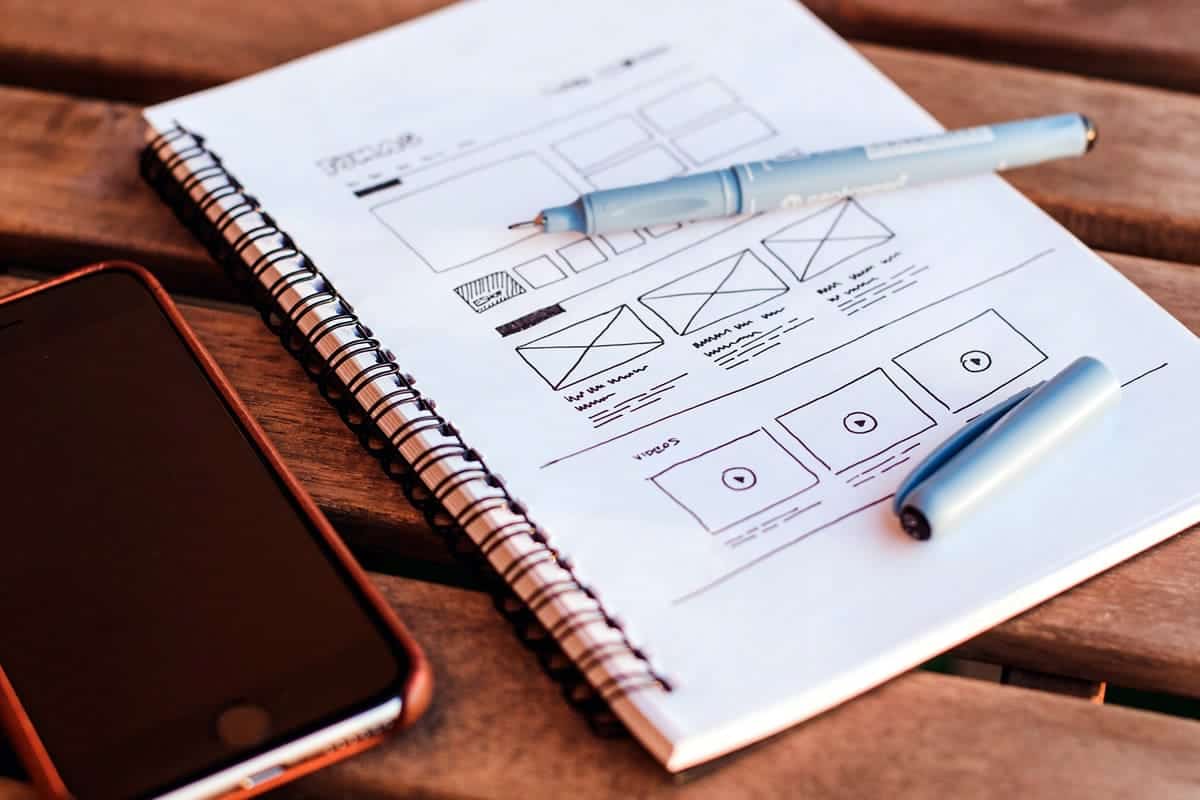User experience design is much more than a buzzword in the industry. In fact, it should guide each and every decision a designer makes to ensure their final product is something that users can and want to use. For newcomers to the field or those who are simply curious, the Interaction Design Foundation put together a comprehensive guide called “The Basics of User Experience Design,” which we found very informative. Below you’ll find our take on their guide and how designers can put these UX design tips to work.
We’ve discussed the difference and importance of form and function here on the Proto.io blog before, and it is central to our discussion of UX design. “Good” UX design boils down to a useful experience for consumers. In other words, they opened up your app and were able to accomplish what they set out to do, whether that be summoning a driver to give them a ride to the airport or ordering delivery from a restaurant across town. Whether or not that user enjoyed that experience is the other piece of the UX design puzzle.
Before we get into the specifics of how to implement the main components of UX design, it is important to notice the role of human psychology. There has to be a baseline understanding of how humans interact with products like yours through extensive user testing. What do your users care about? What are their pain points when it comes to solutions already on the market? What are their dream features and functionalities that you can make a reality with your new product? Meeting with your target user and over time the actual users of your product will help you design and refine an experience for them that they will love.
Seven Factors of UX Design
The Interaction Design Foundation breaks down UX design into seven key factors that take the discipline much further than simply covering “usability.” Let’s break down each of these factors and how designers can implement each one.
1. Useful
Each user may have their own agenda with a product. It’s important to keep this in mind when designing. There will often be many uses for a product, but in each unique case, it can be deemed useful if the user can accomplish what they set out to. Through user research, learn the different uses for your product—some may surprise you, but they are all crucial to know so that you can design an experience that caters to these top ways your product is used in the wild.
2. Usable
This factor is closely linked to the previous one. If users can get the hang of the way your product works, then you have created an effective UX design.
3. Findable
The layout of your product largely determines whether or not users find it useful and usable. An intuitive design can help users get in, get what they need, and get out without unnecessary friction. Make things easy for your users by conducting user research and asking pointed questions that have users explain how to accomplish basic tasks in your app or product. If users can walk you through them seamlessly and find it straightforward to figure out new features, then your design is successful.
On the other hand, if users stumble and scratch their heads, then it’s time to ask questions to figure out exactly which parts are confusing them. Your design can be the most beautiful and make sense to you, but you will need plenty of input from real users with no background knowledge of your product to gain a full understanding of user pitfalls that (if they go unsolved) could eventually lead them to abandon your app or product.
4. Credible
In the age of hacking and data breaches, credibility and trust are paramount to your design and success. When a user opens up your app, beyond your privacy policies and terms of services (that they most likely didn’t read), your design has to give them the feeling that your app is legitimate. Take a health app for example, to find success in the market this app would have to provide accurate information. If the content in the app suggested users eat six cookies and only walk for five minutes a day, users would quickly question its credibility and decide to download something else instead.
This expands to design as well. If this health app had a design that was reminiscent of 2003 AOL, then users would be skeptical. With a design that is so outdated, they may wonder how often the health content is updated. After all, countless medical breakthroughs have happened in the last 15 years, and a credible health app would be completely up to date to provide users with the best information available.
5. Desirable
This is the part of the process where form finally gets to shine—after function has been solidified, of course. What makes users choose one product over another? They both may accomplish the same goal, but something stands out in one of the experiences. Take your morning coffee, for example. McDonald’s serves coffee, as does San Francisco’s famous Phillz Coffee. Both will provide customers will a hot cup of coffee that will perk them up. However, if you presented 10 professionals on their way to work with the option of Phillz or McDonald’s, there is a good chance they would go with the former. Why? Well Phillz has an air of exclusivity around it. As of this writing, there is only one Phillz location outside of California, while you can go to McDonald’s just about anywhere in the world for a coffee. Not to mention, each Phillz has a modern store design and allows customers to order ahead on their app to skip the line. In theory, these two businesses are selling the same product, but one may be more desirable than the other.

When it comes to mobile app design, there is a good chance that your app has competitors. Knowing their features, design, and how users respond to them is important to create points of differentiation. What are solutions on the market missing? Understanding this gives you the ability to make your iteration more desirable to users and gain market share. Create something that users can’t help but tell their friends about. Design a product that strangers will see and have to ask users where they got it. You want your product design to be something consumers can’t stop talking about.
6. Accessible
Not all of your users will have the same abilities and it is key to design an experience that will be accessible to as many users as possible. Screen readers help the blind access your content on your website. This technology reads content quickly and will not be able to parse out any ambiguities on your site. That means images will have to be titled appropriately and the hierarchy of where you place text on each page will have to be logical. If a blind person comes to your website and is unable to get a cohesive understanding of what your company does and how it might benefit them, then it is unlikely they will return. Don’t give users the opportunity to write you off.
This is just one example of accessibility in design, but it contains many lessons for UX designers. Accessibility can’t be an afterthought, it must be ingrained in the design process and continuously iterated on. Depending on where your product is available, there may be local requirements to make sure your product is accessible to all. But no matter where your target market is, designing for accessibility is the right thing to do. It does not leave anyone behind and, as an added bonus, broadens your potential customer base.

7. Valuable
This is a core factor that will determine a product’s success. It connects with our first point, creating a design that is useful, but takes it a step further. Value is what keeps customers coming back. Think of subscription based apps. Customers keep paying for them because they continue to find them valuable. And this can be a granular decision for customers. Take an app that aggregates news sites and magazine subscriptions, for example. With so many newspapers now charging a monthly fee to access their online content, being able to pay a flat fee and read numerous publications is a valuable and simplified experience. But if this subscription service changes $100 per month, users may opt to pick and choose the subscriptions they want instead, as the price tag has made it less valuable.
Final Thoughts
UX design is a complex discipline for newcomers and experienced designers as well. It may be practiced differently, depending on the product, but what holds true is that the user needs to come first. The user research that designers gather is central to understanding what they want and the next step is to implement the updates that they brought to your attention. This is a never-ending cycle, as user needs change over time. Keep your users in the driver’s seat of your product design and you’ll never go astray.
What factors do you think are essential for UX design? Let us know by tweeting us @Proto.io.
Proto.io lets anyone build mobile app prototypes that feel real. No coding or design skills required. Bring your ideas to life quickly! Sign up for a free 15-day trial of Proto.io today and get started on your next mobile app design.







